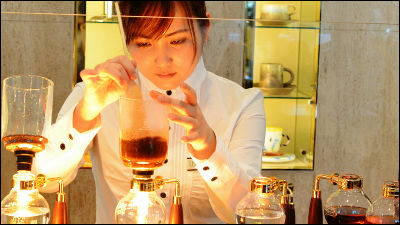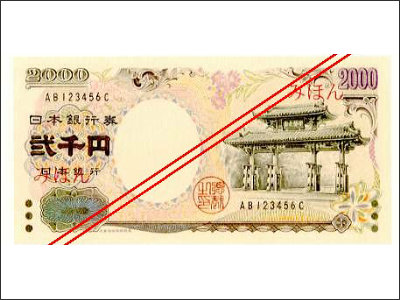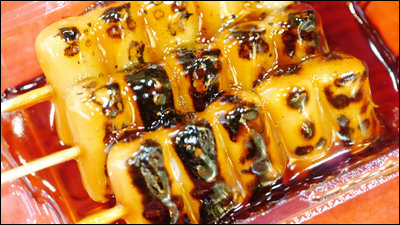I saw the moment when the world's top currency "New 500 yen coin" is produced at "Mint Bureau" which manufactures Japanese money such as 100 yen coin and 500 yen coin

Since its founding in 1871, it has produced six types of currency, such as 1 yen, 5 yen, 10 yen, 50 yen, 100 yen, 500 yen, which is distributed in Japan, the manufacture of medal such as the Order of Culture, the shield of the National Honor Award And the production of Olympic medals, etc. are "A mint"is. As I was concerned about how universally used currency was being built on a daily basis, I participated in a factory tour held in Osaka city Kita-ku Kitamachi, Osaka City's main office, in 2000 It was found that the "500 yen nickel yellow coin (new 500 yen coin)" which was issued to the public was packed with amazing skills to prevent money from being counterfeited.
Independent administrative corporation mint
http://www.mint.go.jp/
The head office of the mint is located on the west side of the Sakuragi Palace Bridge.
Factory tours of Mint can be reserved in advance from the following dedicated site. However, from October 2016, it seems that even if there is no advance reservation, if there is room in the visiting day on the same day it becomes possible to participate by jumping in.
Reservation application site | Tour reservation system / Mint Tour Reservation System

When going to a factory tour, it is better to enter from the north gate along national highway No. 1. Since there is a reception on the North gate side, we will present an identification card here and will receive a numbered ticket and a batch of factory tours.
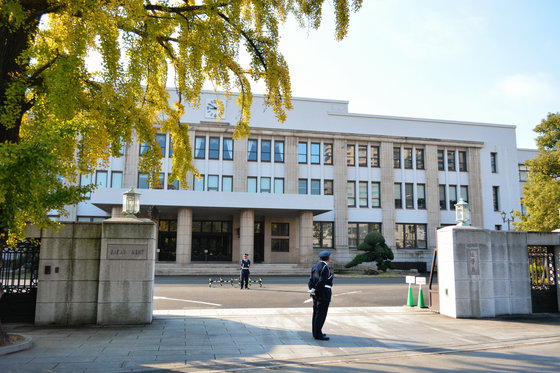
And we head for 'Mint Shop' which is the product sales office of the mint at the north gate side. On the second floor of the mint shop there is a waiting area for those who came to the factory tour, so wait here for the guide of the mint.
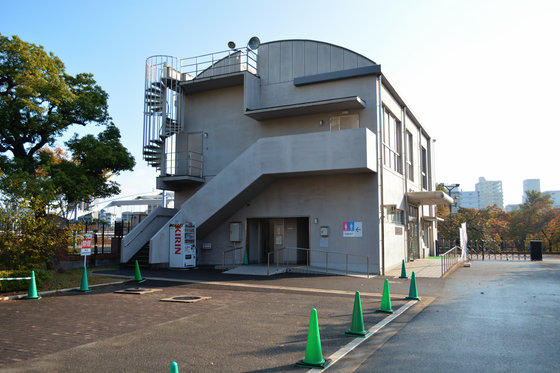
Before going to the coin factory, you can receive materials from the mint and currency first. The material is contained in the original file of the Mint Bureau, and the point that the detailed information such as the material of Japanese ordinary money and the issue year is written on the back side of the file is the point.
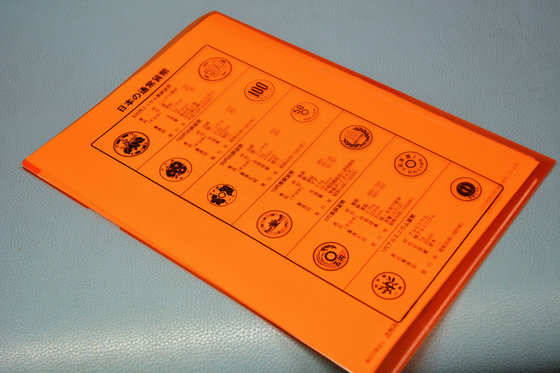
Instead of going to a factory tour as it is, a brief overview of the Mint that used a slideshow will start. The banknotes such as 1000 yen · 2000 yen · 5000 yen · 10000 yen are made with 6 kinds of money such as 1 yen · 5 yen · 10 yen · 50 yen · 100 yen · 500 yen,National Printing BureauWe are printing.

In the Mint, besides money, "Major Order Order Chikage Kiki"Or"Order of Culture"such asManufacture of medal / medalWe are also doing.

◆ Visit the Money Division Factory
When the overview explanation is over, go outside and depart for a factory tour. From the North Gate side "Cherry blossom walkthroughWalk south of the famous cherry blossoms ......

Mint Museumof……

I will enter the building from the side.

Here are the French made stamping machine (black) purchased from the Hong Kong mint station in England which was closed in 1868, and the German made press bought in 1872 (Green).

Follow the indication "Visitor Alley" into the building.

We can visit the "Money Division Factory" to visit the molding factory, the coining and inspection factory, the counting and bagging plants in order.

· Molding factory
That's why the first thing I came was "molding factory." We will visit the molding factory on the 1st floor from the viewing corridor on the 2nd floor. On the day of the visit, the molding factory produced 10 yen, 100 yen, 500 yen money, and 500 yen coin (New 500 yen coin) was manufactured in the most visible manufacturing line.

In the molding factory, we first bring in the metal that is the material of money.

What is shown in the picture is a "coil" of nickel brass (72% copper, 20% zinc, 8% nickel) wound in a thin plate, which is the material of a new 500 yen coin.

This coil is finished to the thickness of a new 500 yen coin with "rolled plate".

The first thing that comes is "pressure puncher (akemi)".

Here punch out the platy nickel brass into a coin as follows.

A circular plate punched out is said to be called "circle (pencil)".

The next thing to come is "Atsuken".

It is hard to see from the viewing zone, but the pressurizing machine looks like this.

In the press machine, bulge is attached to the circular edge portion punched out in the form of currency, making it easier to attach the front and back patterns of currency.

Rounded circle is kore. You can see well that the edge of the coin is raised only a little.

Subsequently, heating the circular shape pressed in the "annealing furnace", and heat the circular shape make it easier to coal.

The annealed round looks like a dull look.

In addition, annealed circles are washed in "washing, dehydrating, and drying machines" to remove dirt such as oil.

It is hard to see from the viewing zone, but the washing machine is kore.

Next to that is a dehydrator. When I visited the factory, I was dehydrating the circle while turning around.

And finally put in a dryer ......

It will look like this when it comes out.

After dehydration, it is carried into the "counting machine" as it is, and it is confirmed whether the number matches with the circular punched out.

A circular shape flowing from the dehydrator.

I could hardly find a person in the molding factory, but I found a worker at a factory by the counting machine side.

· Covered factory
Next I moved to the floor and came to the "coin factory".

There are countless machines such as the following in the coin factory, we will make a circular pattern everywhere and build money.

Because only the coining machine at the back of the coining factory was in operation, the state of coining was to be seen on the monitor.

This is the coining machine. I am using a horizontal type coining machine made by Schuler of Germany and it seems that 750 sheets can be pressed per minute.

The coined money is kore.

A new 500 yen coin of Hoya Joya who made it.

The new 500 yen coin coined is inspected for scratches and dirt on the pattern. In the inspection, we shoot the front and back of money with two cameras and compare it with the image of a genuine coin and judge whether it is genuine or unsuccessful. However, according to officials of the Mints office, the accuracy of coining is so high that there are almost no items repaired by inspection.

The coining power when manufacturing money is about 780 KN with the horizontal type coining machine in the case of the new 500 yen coin. This "about 780 KN" is the same as 78 tons and it is expressed in kg as "78000 kg", which is a tonneemoni pressure.

Running around the coin factory This is "AGV automatic guided vehicle (Premex)". It also carries the circle from the molding factory to the coking factory and carries the role of bringing coins to the coin warehouse after coining. Within the factory there are seven Premexes and it is possible to carry up to 850 kg weight at a speed of 60 meters per minute. In addition, the power of Plymex is electricity, and it is said that it will automatically go back to make a charge when the battery runs out.

In the case of a new 500 yen coin, the production of one coining machine is 272,000. This seems to be producing 750 sheets in one minute, that is, 375,000 yen.

In the new 500 yen coin which is one of the world's largest high-priced coins, several excellent techniques are used to prevent counterfeiting of money. Among counterfeiting prevention technologies, particularly noteworthy processing is "fine point" "fine line" "oblique Giza" "latent image processing" 4 points.

This is a new 500 yen coin. The back side contains 500 numbers.

- Fines and fine lines
This is the surface. On the surface is paulownia flower and leaf are coined, and the character part of "fine point" at the root part of this paulownia leaf and "Japan country" at the top of the surface contains "fine line".

- diagonal Giza
In the new 500 yen coin, counterfeit resistance is improved by diagonalizing the jagged pattern on the money side. This diagonally jagged pattern is called "oblique Giza" and the new 500 yen coin is the world's first oblique Giza adopted currency in a mass production type, and in addition to Japan, it also acquired a patent in the United States and others It is said that it is.

- Latent image processing
"Latent image processing" is an anti-counterfeiting technology that uses currency viewing angles, that is, light and dark differences. When you try to apply light from various angles to the back of the new 500 yen coin (the surface on which numbers are written), the letter "500 yen" emerges in the zero of 500 numbers, but this is a latent image It is a pattern by processing.

These special machining is supposed to come up as a pattern when pressing the circle with the front and rear pole signs attached to the coining machine.

The stamp of each currency is as follows.

Circles and 100 yen coin after the seal are also on display.

In addition, it is freshly done today ...

100 yen currency was also displayed. It is engraved as "Heisei 28 years" firmly for a one hundred yen coin.

Besides, in the coin factory, it is a graph of the trend of the number of money production ... ...

Up to the chart showing the number of money production from 1943 to Heisei 20, 360 degrees There was lots of information on money regardless of where I looked.

· Counting · Bag gathering factory
The last place of the factory tour is "counting / bag hanging plant".

As with other factories machines are lined up ... ...

You can see that money is packed in bags in the machine.

The bag in which money can be put is like this.

All coins are put in the same money bag and sent to the Bank of Japan, then sent to the commercial banks nationwide and reach the general consumers. The number of sheets that can be put in by currency will be different, such as 2000 pieces if the money bag is 500 yen, 4000 pieces if it is 100 yen. Also, even if the size of the money bag is the same, the weight of the bag differs depending on the currency, and in the case of 100 yen coins, it will be weighing as much as 19.2 kg.

Fasteners for closing the currency bag differ depending on the type of currency put in the bag and the total amount of money contained in it is also displayed.

The robot arms will stack them automatically ...

When the number reaches a certain number, the workers at the factory confirm that the bags are piled up cleanly.

Then we will add a net to the mountain of the bag and bring it to Premex.

◆ Mint Museum
This is a part of the factory tour seen in the factory tour at the mint's principal office, and it will move to the "Mintyu museum" that is installed as it is as it is until the bag tightening.

Opening time of the Mint Museum is from 9 o'clock to 16:45 (admission is until 16 o'clock). Entry fee is free to enter from the first floor without going to the factory tour. In case of factory tour, the viewing zone and the 3rd floor part of the museum are connected, so we will go around the hall from the 3rd floor of the museum.

On the third floor of the museum it is possible to follow the history of Japanese money,Empress' morning twelve queenIt is the first in Japan, the first circulating money in Japan "Kazan KaishinIt is on display ... ...

"Toyotomi Hideyoshi" is also said to be the "first time" that the god engraver Mr. Goto of the Muromachi shogunate made it made is also exhibited.

There are also notation such as the following for large-size and gold coins being exhibited so that the price can be known.

"Genroku large formatIt is worth 50 million yen how much.

There are also exhibits in the clear case extending vertically as follows.

A commentary on the exhibit is also written ... ...

You can see precious large-sized real thing at hand. This was made in 1589 (17th year of Heisei) "Tensho Grand Large format".

Built in 1591 (Tensho 19 years)Tensho Ryori".

To adjust the weight on the back of the Tian Ryudo large size, a small weight is attached for a while.

Furthermore, "Bamboo flower gold" that an old man who was hunting a bush in Okawa flowing beside the Mint Bureau was discovered from the bottom of the river ... ...

"Chrysanthemum tablet" etc.

"1 yen silver coin" in the Meiji Era ... ...

We are now able to learn the history of Japanese money, such as "20 yen gold coin", through modern circulated money while seeing the real thing.
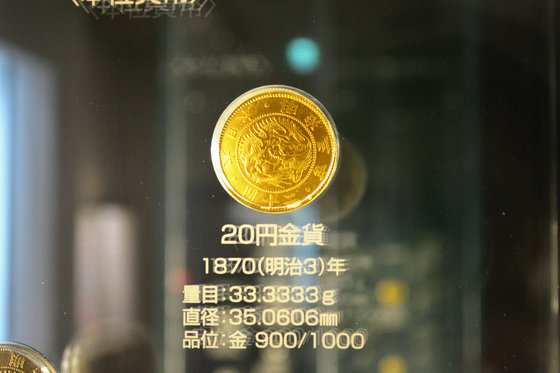
Among the exhibits, "Phantom currency" etc. which did not circulate in the world are displayed.


The following picture shows when the currency of 1 yen, 5 yen, 10 yen, 50 yen, 100 yen, 500 yen currently circulated in Japan is born and when design was changed. The timing when the design of money was changed is that two currencies are arranged in one square. According to this chart, you can see that the new 500 yen coin was issued in 2000 and that the oldest one among current currency designs is the one-yen coin design.

In addition to the memorial currency of Japan ....

Unusual to collaborate with animationProof currency"

New Zealand silver coin with the design of movie "Star Wars" published in New Zealand

A coin in the shape of the Australian continent instead of a circle

Two dollar silver coin which reproduced carbon frozen Han solo superbly on a coin

You can see unusual currency in the world such as three-dimensional 3D silver coin.

Experience corner is prepared in the museum ... ...

Here, it is possible to take a currency bag containing real money in hand.

The size bag is smaller than you imagined if you look closely. However, its weight has exceeded 10 kg so much, and I am surprised by the gap with the apparent compactness.

In addition, various memorial currencies are on sale at the first floor of the mint shop, which is a meeting space for plant tours, so it is highly ant to stop by after visiting factory tours & museums.

Related Posts:
in Coverage, Posted by logu_ii




